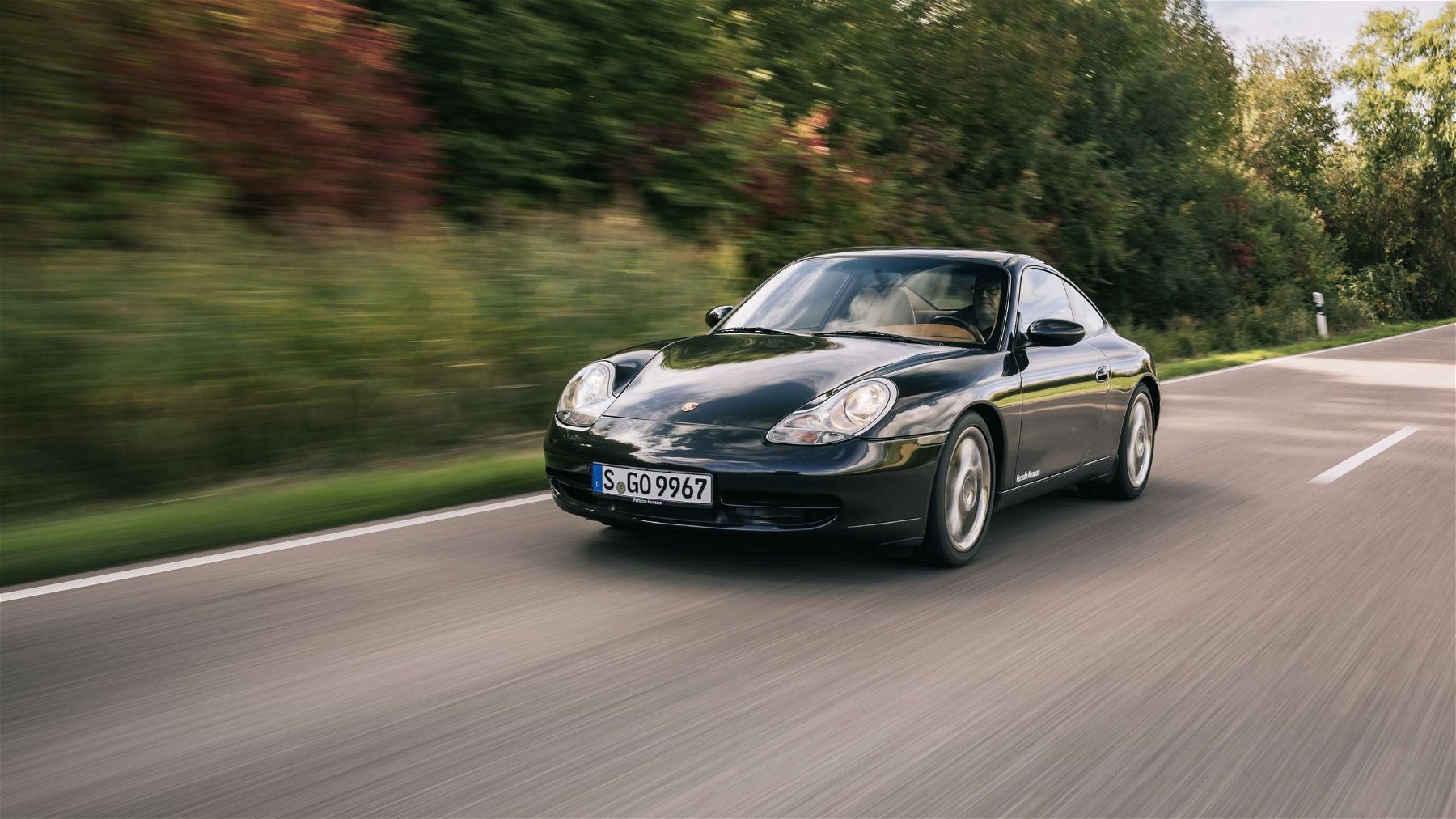
The Porsche 996 was Porsche’s first 911 with a watercooled six-cylinder boxer engine. It is also still the only 911 without classic round headlights. Despite considerable criticism from the traditionalists among Porsche fans, the 996 became a box-office hit. The 2+2-seater sports car was launched in 1997 and built until 2006. It was available as a Coupe, Targa and Cabriolet. With over 175,000 vehicles built, the Porsche 996 replaced the 944 as the best-selling Porsche sports car of all time.
In the mid-1990s, Porsche decided on a new direction. In order to reduce the 911’s production costs, Wendelin Wiedeking and his board opted for assembly line production and a policy of shared parts between multiple models. The cost pressure was too big, the margins too small. And the fifth 911 generation had to be a hit. Otherwise, the company would have faced extinction. That’s why the development of the Porsche 996 is very closely linked to the Boxster 986. A key point of the 986’s development contract was that the body of the Boxster and the later 996 should be identical from the front until the B-pillar.
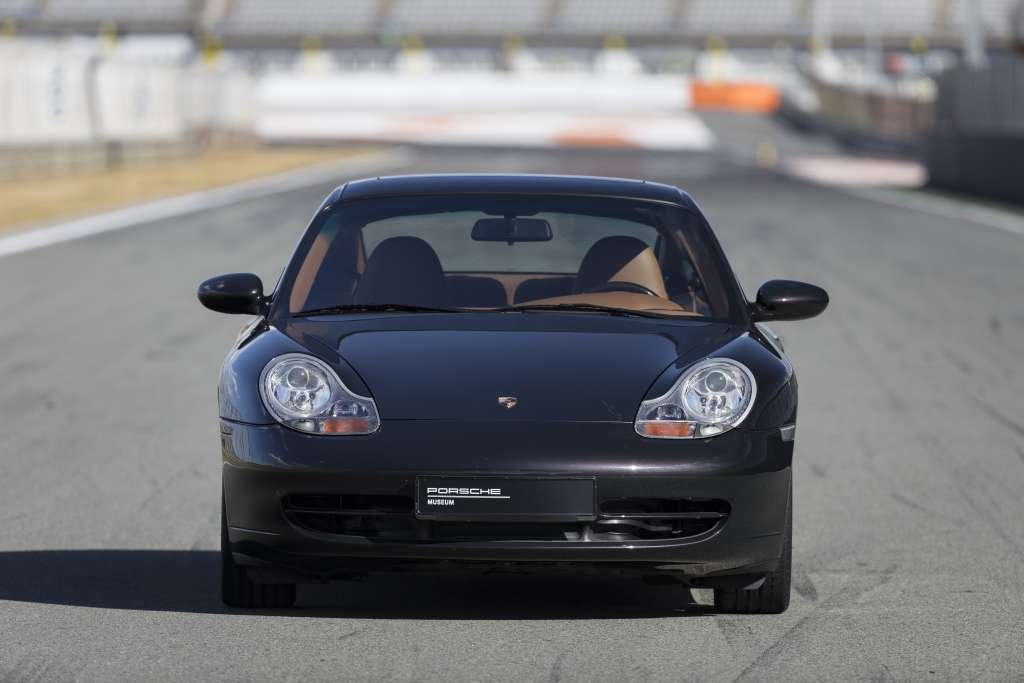
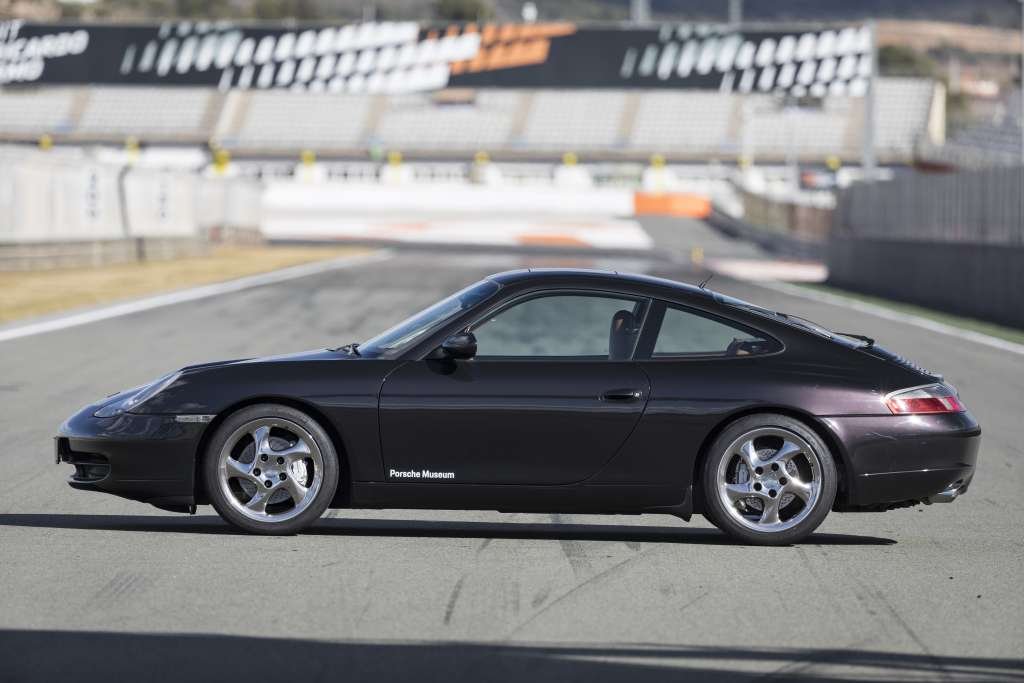
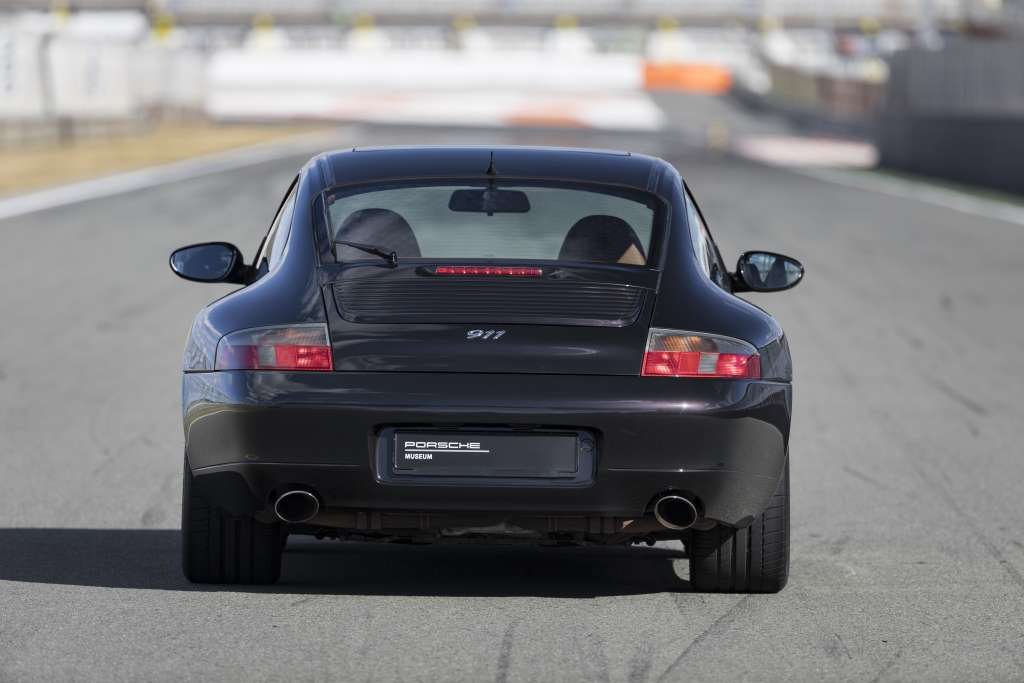
Porsche’s new 911 had nothing in common with its predecessor 993. The dimensions grew in all directions. The wheelbase was increased by 80 millimeters to 2,350 millimeters, the body grew by 18.5 centimeters in length and three centimeters in width. All sheet metal parts were redesigned. For better aerodynamics, Porsche now mounted the exterior mirrors in front of the side windows instead of on the doors. Incidentally, these were also identical to the Boxster. In total, the Porsche 996 was 50 kilograms lighter than its predecessor and its body rigidity had increased by 45-50%.
Even the headlights were no longer round but had an S-shape. The decision to do this was also based on economic reasons. For faster final assembly and easier replacement, every necessary lighting function was to be integrated in a single headlight element. It wouldn’t have been possible to integrate parking lights, low beams, high beams, turn signals and fog lights in a round headlight.
After 34 years, the sports car manufacturer is implementing a comprehensive realignment of its icon with the new 911 and solving urgent tasks. The focus is on reducing production costs, which began with the predecessor, by ensuring the highest possible parts compatibility with other model series, such as the new Boxster, as well as updated safety and emissions regulations. With the Type 996, Porsche is finding its way into the future.
Porsche on the 996’s development history
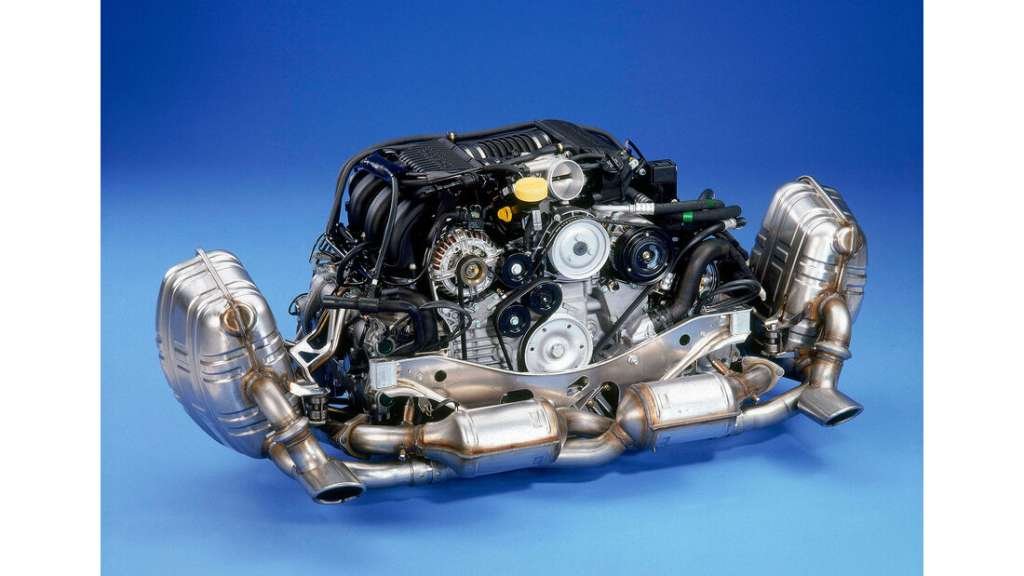
Its powertrain also underwent a caesura. The new M96 engine generation, initially with a displacement of 3.4 and later 3.6 liters, was no longer aircooled but watercooled. This resulted in a significant improvement in thermal management, which made it possible to use four-valve technology with two overhead camshafts per cylinder bank. With obvious advantages: higher reving engines, more power reserves, cleaner combustion, lower fuel consumption, lower noise emissions.
However, the Porsche 996 launch split the Porsche world in two. Talks had been precisely about the watercooling. While the press was unanimous in its praise of the Stuttgart car’s added qualities, owners of air-cooled 911s were up in arms about the break with tradition. But Porsche was right in the end with its reorientation of the 996. Generation Five of the Porsche 911 set trends, some of which still define the brand’s character a quarter of a century later. Six-cylinder boxer engines with watercooling have been the norm in the 911 since the launch of the Porsche 996, without exception. The merging five round instruments were set until the 991.2 was discontinued.
In the fifth-gen 911, Porsche’s engineers also managed to make the handling of the rear-wheel-drive sports car finally suitable for the mass market. Although it was a thorn in the side of purists, it opened up a larger buyer base. It has to be said, however, that the sweep in the headlights ultimately failed to catch on. With the exception of the first-gen Cayenne, no Porsche ever again received comparably shaped lights. Nevertheless, under the direction of Harm Lagaay, a 911 was created that is already considered a timeless classic today.

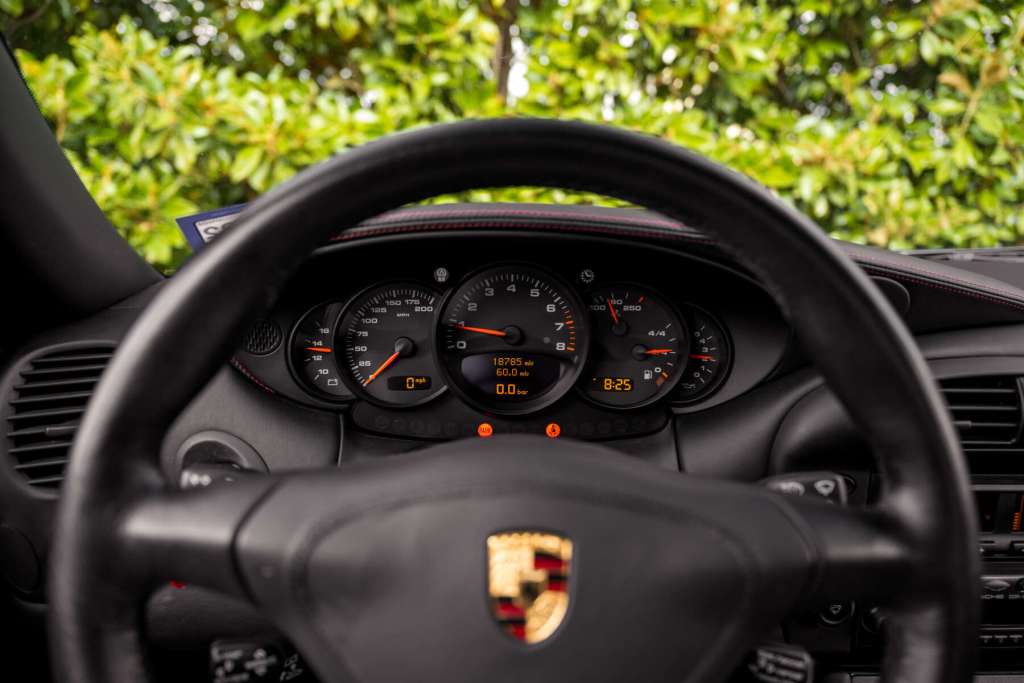
In the interior, Porsche revised the usability concept from the ground up. The rejuvenated air conditioning controls were now completely self-explanatory. For the first time, Porsche Communication Management (PCM) was available with a large color screen in the center console. In addition to the cassette radio, it offered a separate CD drive, GPS navigation and even a GSM hands-free telephone. A glove compartment, on the other hand, was looked for in vain in the first-generation Porsche 996. Traction control with automatic brake differential and traction control were available at extra cost. Nevertheless, power windows and heated exterior mirrors were standard. The redesigned luggage compartment behind the rear seats offered 65 liters of storage space, and even 200 liters when the seats were folded down.
At its launch in 1997 (model year 1998), the Porsche 996 was only available as a rear-wheel drive Carrera (often also called Carrera 2). There was a choice of Coupe and Cabriolet body styles. However, the first convertibles were not delivered until April 1998. There was no Porsche 911 Targa. The 3,387 cc M96 engine with 300 hp at 6,800 rpm and 350 Nm at 4,600 rpm was at work in the rear of all of them. Oil was supplied by an integrated dry sump lubrication system without an external oil tank. In the first model year, the M96 engines still had a mechanically operated throttle valve with a throttle-cable.
Power was transmitted as standard via a newly developed 6-speed cable shift. A likewise revised 5-speed Tiptronic S was available as an option. The front axle had a McPherson axle with longitudinal and transverse control arms. The rear axle was fitted with an adapted version of the LSA suspension (light, stable, agile) first used on the 993. This was a multi-link axle with a ride stool. There were 17-inch wheels in 7 / 9 inch widths as standard, or 18-inch wheels in 7.5 / 10 inch widths at extra cost. Brakes were black four-piston monobloc fixed calipers on perforated and ventilated discs.
After the first model year still featured drop-shaped front headlights with yellow turn signal lenses, Porsche decided on a facelift for MY 99. Yellow turn signals were no longer in keeping with the spirit of the times at the end of the millennium. From now on, Porsche therefore installed clear lenses, which somewhat nerfed the fried egg look of the first generation.
From MY 99, the Carrera 4 with permanent all-wheel drive also joined the lineup. Externally, it did not differ from its rear-wheel-drive sibling. Only a glance at the frunk reveals it: Due to the necessary front axle differential, it is 30 liters smaller than the Carrera 2. Between 5 and 40 percent of the drive power was transferred to the front wheels via a Visco clutch.
Another innovation presented by Porsche was an electronic throttle system. A potentiometer on the accelerator pedal transmits its position to a servomotor, which now controls the throttle valve instead of the aging cable system. This was necessitated by the introduction of Porsche Stability Management (PSM), which is available at extra cost. Porsche also offered a factory power upgrade to 320 hp and 350 Nm through the Exclusive department. However, this was only available until December 2000.
In May 1999, Porsche presented the 911 GT3, a new homologation model for racing. It was based on the body of the 996 Carrera 4 and designed as the spiritual successor to the 993 Carrera RS – with a 360-hp naturally aspirated engine and less weight. Called the M96/76, the engine was based on the crankcase of the 964 and Porsche 911 GT1. It achieved just under 8,000 rpm with titanium connecting rods, an eight-bearing crankshaft and dry sump lubrication with an external oil tank. Incidentally, the 996 GT3 was the first naturally aspirated 911 to top out at over 300 kph, namely 302 kph.
For the 2000 model year, Porsche expanded the 996 family with the special Millennium model based on the Carrera 4, limited to 911 units. In addition, automatic climate control was standard from then on. The biggest innovation for the new millennium, however, was the introduction of the new 911 Turbo. The first water-cooled Turbo received two turbochargers, independent bumpers, skirts and air intakes in the rear fender. It also anticipated the headlight shape of the facelift. For the first time, the 911 Turbo was optionally available with Tiptronic S. To keep the 420 hp appropriately in check, Porsche introduced the new Porsche Ceramic Composite Brakes (PCCB), which were available at extra cost. Back in the day, this was space-grade material, but it has become a matter of course nowadays.
Another innovation introduced in the fall of 2000 was the Porsche 911 GT2. This was once again a sharpened Turbo model, but without all-wheel drive and with 462 instead of 420 hp. Unlike the Turbo, the GT2 had the PCCB on board as standard and was only available with a 6-speed manual transmission. As an option, the 996 GT2 was also available with a Clubsport package – including Nomex bucket seats, a roll bar, six-point seat belts and a fire extinguisher.
The Porsche 996 Carrera received the Turbo’s headlights for the 2002 model year. This was Porsche’s response to criticism of the headlight design and set it apart from its platform brother, the Boxster. The interior of the 996 now also featured a glove box and the new PCM 2 16:9. The Carrera’s engine also received a modified crankshaft with a stroke of 82.8 mm. From the increased displacement of 3,596 cc, the Carrera now made 320 hp and 370 Nm. Porsche also implemented the VarioCam Plus system from the Turbo for a more bulbous torque curve. It allows the intake camshafts to be adjusted for improved power delivery.
Porsche also expanded its model range once again with the 996 Carrera 4S Coupé and the Targa. The 4S received the wide Turbo body with modified fenders and a continuous light band at the rear, as well as all-wheel drive and Turbo brakes. In contrast to the 4S, the 996 Targa was only available in the narrow body with rear-wheel drive. The standard equipment clearly positioned the 4S as the top model in the 996 Carrera range: Electrically adjustable seats with memory function and a CD radio with sound package were not included as standard on any other Carrera.
Starting with the 2003 model year, Porsche again offered a performance upgrade for the 996.2 Carrera models. At 370 Nm, torque remained identical to the WLS (X51) on the 996.1, but peak power went up to 345 hp. The 996.2 GT3 also received a bit more power. From now on, it had 381 hp and 385 Nm of torque. The GT3’s brakes, which were enlarged anyway for the facelift, could now also be ordered in PCCB version. Another new part was the independent rear wing. But the Porsche 996 GT2 was also revised. The most powerful 911 now delivered 483 hp and 640 Nm of torque. Enough for 0-100 kph in four seconds and 319 kph top speed. As a further model, Porsche also presented the open-top 996 Carrera 4S Cabrio in 2003.
For the following model year, Porsche offered three more new iterations of the company’s flagship, the 996 Turbo Cabrio, the 996 GT3 RS and the 911 Anniversary Model “40 Years of 911”. This was the first time since 1989 that there had been a series-produced 911 Turbo Cabrio. Which meant that the model range of the 911 was more diversified than ever before. The 996 Turbo Cabrio was available with 420 or 450 hp, but there was no sports suspension for it. With the roof closed, the Turbo Cabrio ran at 305 kph, and 290 kph with the roof open. The Porsche 996 GT3 RS was again designed as a homologation model, this time for the FIA N/GT category. It was also fitted with a fully adjustable chassis.
For the 996’s last year of production, Porsche came up with yet another new model – the 911 Turbo S. It was available as a coupe and convertible exclusively with PCCB, including 350 mm brake discs at the front, and 18″ wheels painted in GT Silver. With 1,563 units (963 Cabriolets, 600 Coupés), the 996 Turbo S is one of the rarest 996 models alongside the GT2 and enjoys great popularity among collectors.
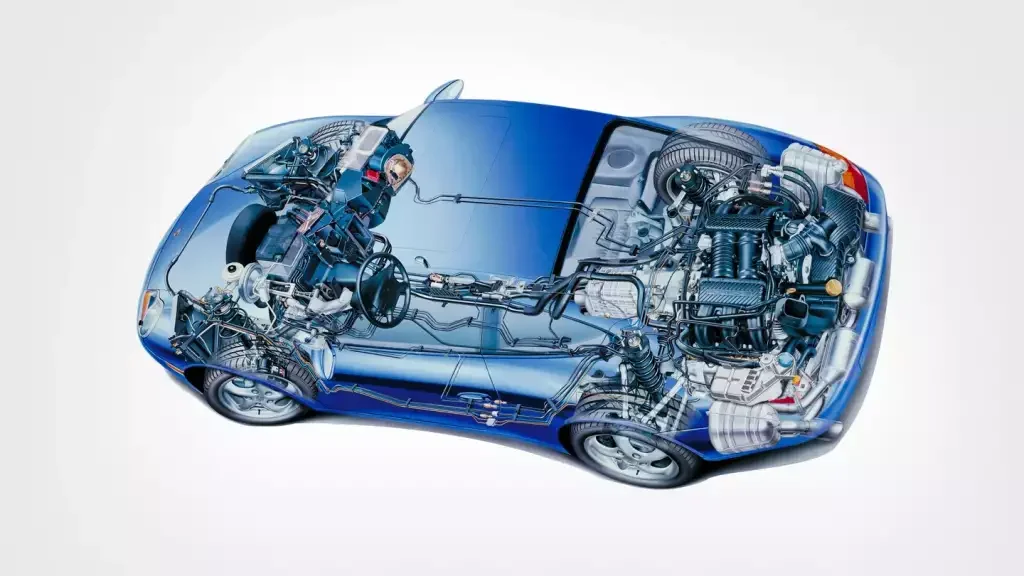
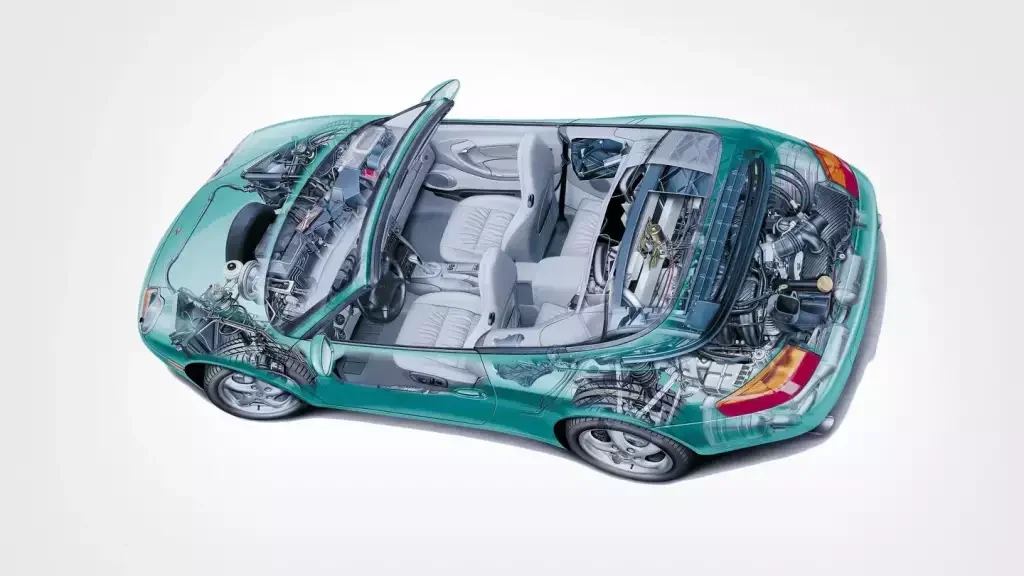
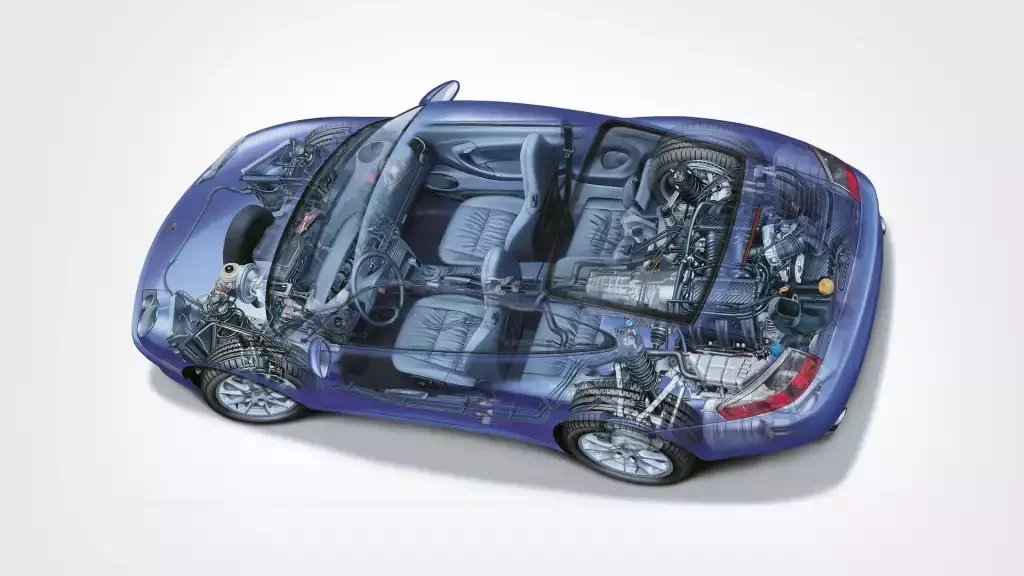
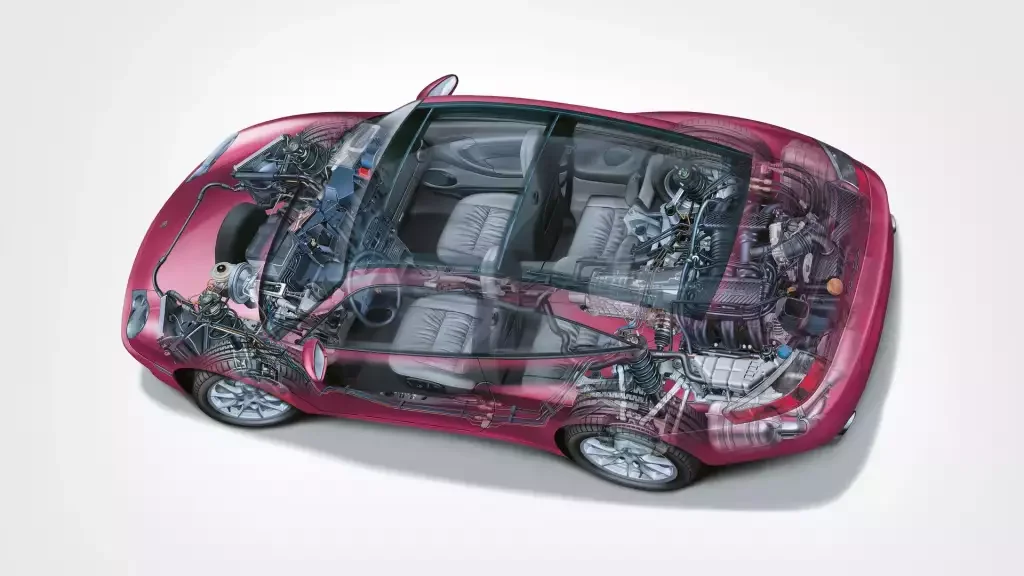

Even before the Porsche 996 GT3 was presented as a road car, it made its debut on the race track. While the Porsche Super Cup already relied on the first GT3 for the entire 1998 season, the Carrera Cup Deutschland still started on 993s and only switched to the newer model later in the season.
In 1999, Porsche sent a 996 to the 24-hour race at Le Mans for the first time in the form of the 911 GT3 R. It was an instant success, as the Manthey and Champion teams scored a one-two in class at the very first attempt. A year later, Porsche 911 GT3 R cars took all class victories in the FIA GT World Championship. In addition, Porsche 996s took 19 class victories in 30 rounds of the American Le Mans Series between 1999 and 2001. The further developed cars later bore the names Porsche 911 GT3 RS and RSR.
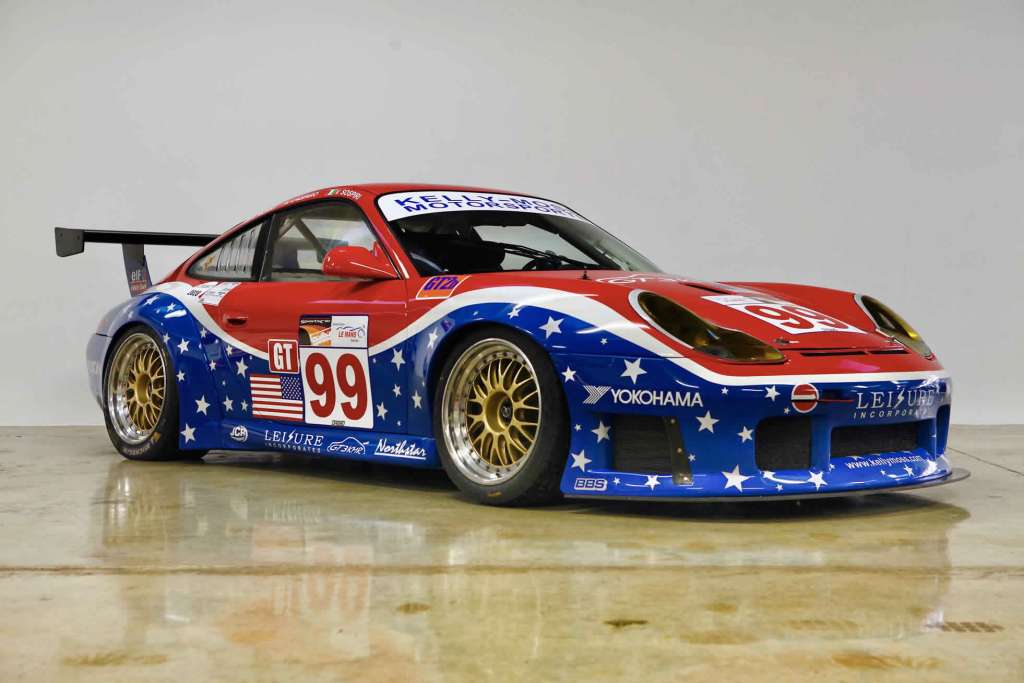


In 2003, Porsche 911 GT3 RS also achieved two still unrivaled successes. In February, a 996 driven by Jörg Bergmeister, Timo Bernhard, Kevin Buckler and Michael Schrom won the 24 Hours of Daytona ahead of the superior prototypes. It was the last time that a production-based GT car was able to take an overall victory at Daytona. In addition, the Freisinger Porsche team, with the participation of Norbert Singer, took the overall victory in the 24-hour race at Spa. It was the only overall victory ever for an N-GT category car in the FIA GT World Championship.
On the factory side, the Porsche 996’s racing campaign with the GT3 RSR ended in 2005 after a total of seven class victories at Le Mans, one overall victory and five class wins at Spa, one overall victory and two class wins at Daytona.
Porsche’s first water-cooled 911 was used in a number of films. A scene from “Gone in 60 seconds,” for example, became world-famous. In the action film with Nicolas Cage, presented in 2000, a Porsche 996.1 Carrera drove through a shop window.
However, the Porsche 996 probably made its best-known film appearance in 2006 in the animated film “Cars”. There, a 996.2 Carrera played the female lead named “Sally Carrera,” a California lawyer with a sense of style and elegance.
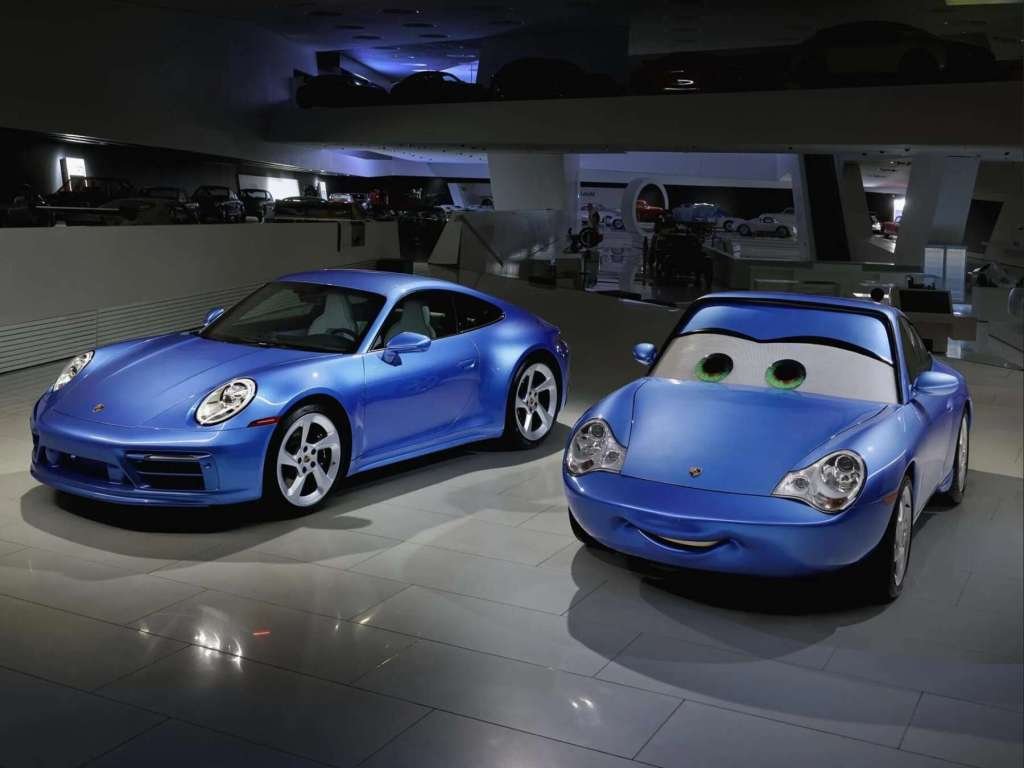
In 2022, Porsche took the film character as a model and built a genuine one-off in the form of the Porsche 911 Sally Special. The Sally Blue Metallic painted Porsche 992 on a Carrera GTS basis generated a great deal of media coverage and was auctioned off at RM Sotheby’s for a good cause. At their Monterrey auction in August 2022, Sally fetched $3.6 million.
© title image: Porsche AG
Elferspot magazine